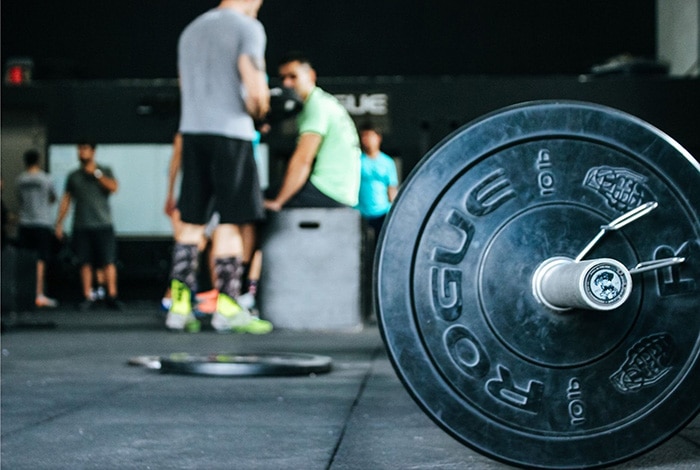You wish to avoid theyo-yo effect after a low-calorie diet? You are in the phase of weight lossAre you in a situation where you are losing weight but can no longer eliminate excess fat? If you are in one of these two situations, the reverse dieting can help you reach your goals. But is it really possible to lose fat by eating more calories?
What exactly is reverse dieting?
Also known as the reverse diet, reverse dieting is an alternative to the traditional feeding technique aimed at gradually increasing the number of calories consumed during a diet.
To lose weight, it is essential to have a caloric intake lower than the energy expenditure: it is the caloric deficit. Over the long term, however, this can slow or stall your metabolism as it seeks to adapt to save energy.
Reverse dieting aims to get it going again by gradually increasing your caloric intake until you reach your daily requirement (daily energy expenditure, or DEJ). This gradual increase will allow the body to understand that it can consume your calories normally again.
As surprising as it may seem, this increased caloric intake can allow you to continue to slim down if you were stagnant during your dry run.
For the moment, few scientific studies have been conducted on this concept. However, many athletes regularly use the reverse dieting method with success. Personally, I use it to stabilize my weight and keep my muscles visible after a period of drying.
For what reasons should we undertake a reverse dieting?
Doing a reverse diet can be effective in two main types of situations:
- to return to caloric maintenance after a diet;
- to continue to lose weight if your diet stagnates.
Reverse dieting after a dry spell
How maintain weight after a diet? You have certainly already asked yourself this question.
At the end of a weight loss phase, it is common to see people immediately regain the weight they lost. This is called the yo-yo effect.
This is simply explained. When it is subjected to prolonged caloric restriction, the body naturally seeks to save its reserves to maintain homeostasis. This regulation process leads to a slowing down of the metabolism.
Indeed, during a low-calorie diet (as opposed to a high-calorie diet), the body will consume fewer and fewer calories over the weeks.
If you suddenly increase your caloric intake, you will quickly gain weight and store fat. It is therefore preferable to go through a reverse dieting phase until you reach your maintenance calories.
Reverse dieting to unblock a diet
During a diet, it can happen that your weight loss is blocked, even though you are still in a caloric deficit.
As you now know, the culprit is your body. Its ability to adapt to its environment by saving itself can prevent you fromeliminate fat superfluous.
Nutritionists and sports coaches talk about blocked metabolism.
To revive the metabolism and continue to lose weight, you can use reverse dieting.
The different steps of a reverse diet
Now that you know what reverse dieting is and why to implement it, we will see how to do it concretely.
The first step in reverse dieting is to know how many calories you are currently consuming. You will also need to calculate your normal daily caloric requirement. The latter is specific to each person in that it depends on age, gender, weight, height and level of physical activity. To do this, a calorie calculator is available for free on my website.
The second step is to determine the rate at which you will close the gap between your current consumption and your actual need. For best effect, a step increase of up to between 100 and 250 calories is recommended.
The next step is to know when to increase your caloric intake again. You will move to the next level when your weight has stagnated for about 10 days. It is therefore essential to weigh yourself regularly.
Finally, once you have returned to your maintenance caloric intake, you can stop your reverse diet to maintain your weight.
You want to boost your metabolism and eat up to 1000 extra calories a day without gaining fat? Discover the Ultimate Guide to the Reverse Diet.
Tips for a successful reverse dieting
Wait long enough before starting a reverse dieting
Before starting a reverse diet To start losing weight again, you need to make sure that your current caloric deficit is really not working anymore.
This is why it is important to be patient. It is possible that this blockage is only temporary and will resolve itself. On the other hand, if you observe a stagnation phase of several weeks (3 to 4 weeks), it may be wise to start a reverse dieting and to increase your intake gradually.
This will allow to repair your metabolism. You can then resume your hypocaloric weight loss diet.
Keep track of your caloric intake
Successful reverse dieting requires rigor and precision.
First, you will need to know your current calorie needs. It will also be necessary to identify the number of calories consumed each day.
To do this, I recommend weighing all of your food using a kitchen scale. You can then record the amounts consumed in a mobile calorie counting application such as My Fitness Pal or Fat Secret.
Watch your macronutrients
A good macronutrient distribution (carbohydrates, proteins and lipids) is equally important to make your reverse dieting a success.
If your progressive caloric surplus is based on too much fat consumption, it can lead to fat gain. Better to increase carbohydrates and proteins!
Overall, the vast majority of your diet should consist ofhealthy and varied foods such as fruits and vegetables or whole grain foods.
Go gradually
Whether you are looking for a diet to stabilize your weight or a solution to continue losing weight, the success of your reverse diet depends on its progressive aspect.
You may gain a little weight at first. Don't panic, it is probably water related to the filling of glycogen reserves. This water will be eliminated naturally and should not affect your reverse dieting.
In any case, increase your calories little by little to limit the gain of fat and not to reduce all your efforts to nothing.
Be physically active
One last tip for a successful reverse diet: keep up your program of strength training or fitness at the gym.
If you change the number of sessions in your training plan, for example, you will also need to adjust your caloric requirement, up or down.
What are the advantages and disadvantages of this diet?
The advantages of reverse dieting
As we have discussed, the reverse diet can repair a broken metabolism or to stabilize its weight after a dry period.
But increasing the amount of calories consumed has several other benefits.
Of course, the first of these is that you will eat more on a daily basis. You may be able to reintroduce some of your favorite foods that you had to do without for several months.
This new caloric intake will give you more energy to perform intense sports sessions. In the same way, you will recover more easily at the end of each training session. This improvement of the muscle recovery will allow you to achieve better performance.
The disadvantages of reverse dieting
The main difficulty of reverse dieting lies in the precision that must be shown on a daily basis. This feeding method involves rigorously tracking the number of calories consumed daily, while controlling your macros.
The addition of calories is very gradual and the slightest deviation can have consequences. In this sense, this diet can be difficult to implement in the context of a developed social life.
Especially since reverse dieting is not an exact science. Even if you are used to dieting, your body is unique. You will most likely make several attempts and make mistakes before you get it right.
Finally, despite the positive experiences of many athletes and other bodybuilders, the lack of scientific evidence on the effectiveness of this type of diet remains an important limitation.
Conclusion
Whether you are stagnant in your weight loss goal or want to stabilize after a diet, reverse dieting is an effective dietary technique. The simple fact of gradually increasing your calories can repair a damaged metabolism. While this method takes time and discipline, it can help you achieve the the figure of your dreams.










